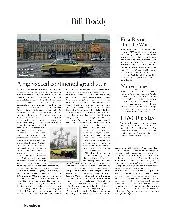
LBVCR update
The well-established London to Brighton annual car run is destined this year to be held on Sunday November 7. Five hundred and fifty entries have been received already, 25 per…
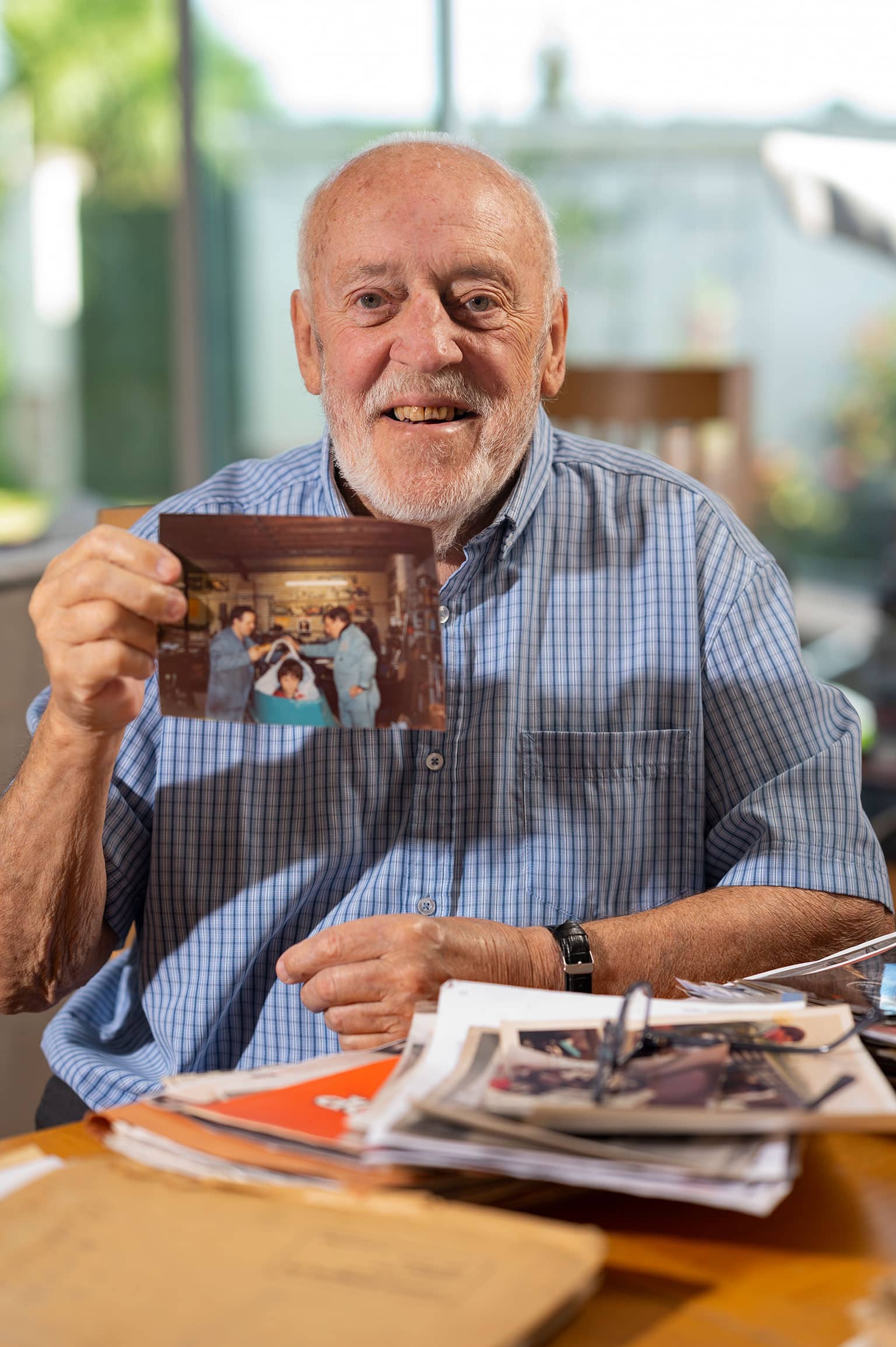
Matt Richardson
You’re wandering round the paddock at Oulton Park looking at, say, F2, F3 and F Junior cars. You probably think you know who built them – it says so on the badge. Brabham built that BT16, Chevron constructed the B8 over there. And that FJ Lotus – you have a vague memory that early on Chapman outsourced chassis to another firm. Some little business under the railway arches… What was it called?
If you’re already shouting, “Arch Motor! Everyone knows that!” then have a coconut. But who was involved in Arch Motor? One answer is a man called Cyril Malem, and amazingly he not only did contract work for Colin Chapman at the end of the 1950s, he’s still, at the age of 82, producing chassis. Not for racing cars now; today it’s rare motorbikes. In fact, bikes have been the major part of his life. But we’ll get to that later, after we’ve worked our way through why Bruce McLaren, Ron Tauranac, Jim Clark and Emerson Fittipaldi were all grateful that Cyril was around when they needed him.
Today Cyril lives in Bournemouth, and no, he didn’t go there to retire. He went there in 1968 to work with another metal guru, his best mate Len Terry, architect of so many Lotuses, Eagles, Ledas and a whole lot else aside, not forgetting the Fleur de Lys vintage-style lorry.
When we’re making arrangements for a (pre-lockdown) visit Cyril says, “Come the day after my chemotherapy, I’m at my best then.” And he is; not too mobile but ebullient, cheery, proud of all the metal that’s passed through his hands. Despite the time that’s passed, he can recall the day some stranger looked in to the workshop under those arches and asked a question that would link Cyril to a famous name.
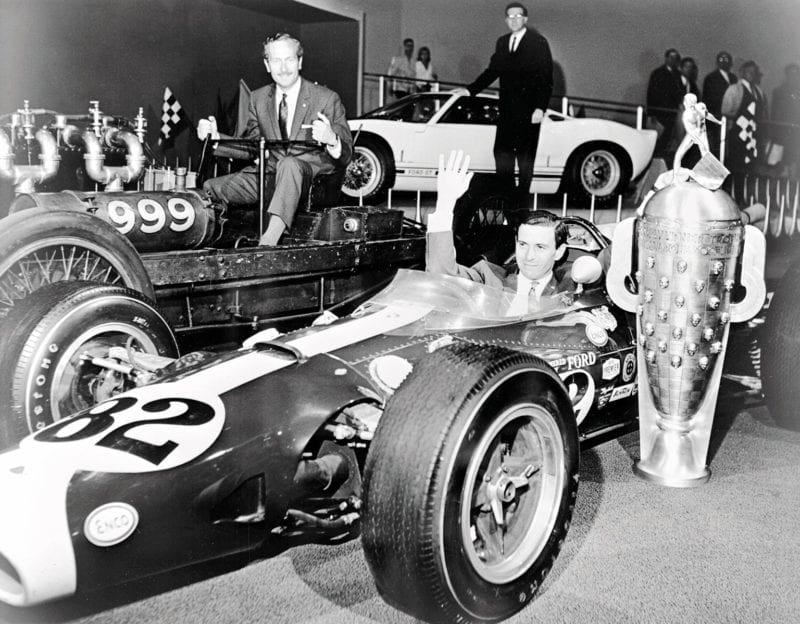
Success Stateside. Lotus may have constructed Jim Clark’s Indy 500-winning 38, but Cyril had a hand in it.
Trained as a toolmaker, Cyril soon found his way to Hornsey in London where bike racers Bob Robinson and Ted Young had rented arches near the Tottenham ground and started Arch Motor. Cyril joined them. Which is where that stranger appeared.
“I thought he was a time-waster,” says Cyril. “I said, ‘What do you want?’ when he rolled up. Then he asked if we could make some wishbones.”
The link with the well-known time-waster Colin Chapman expanded into parts and then chassis for the Lotus 6 and 7, Formula Junior, and even parts of an Indianapolis winner. “Arch went a long way with him, until he moved to Cheshunt [in 1959]. We didn’t build the F1 cars, but later I made bulkheads for the 38 Jim Clark won Indy with.” The connection was the 38’s designer, Len Terry. Having met in Len’s Lotus years, Cyril and he would later be constant collaborators. They were a matched pair – independent, strong-minded, resistant to authority.
The way Cyril tells it, he had no patience with spiky disagreements; he just upped and moved on. Similarly Terry, who twice walked away from Lotus and managed to fall out with Dan Gurney over his Eagles. Both worked best as independents, but were successful collaborators on many projects and Len’s name comes up often as Cyril recounts his times. Len died in 2014. “I miss him so much,” Cyril says, looking at a photo of his friend.
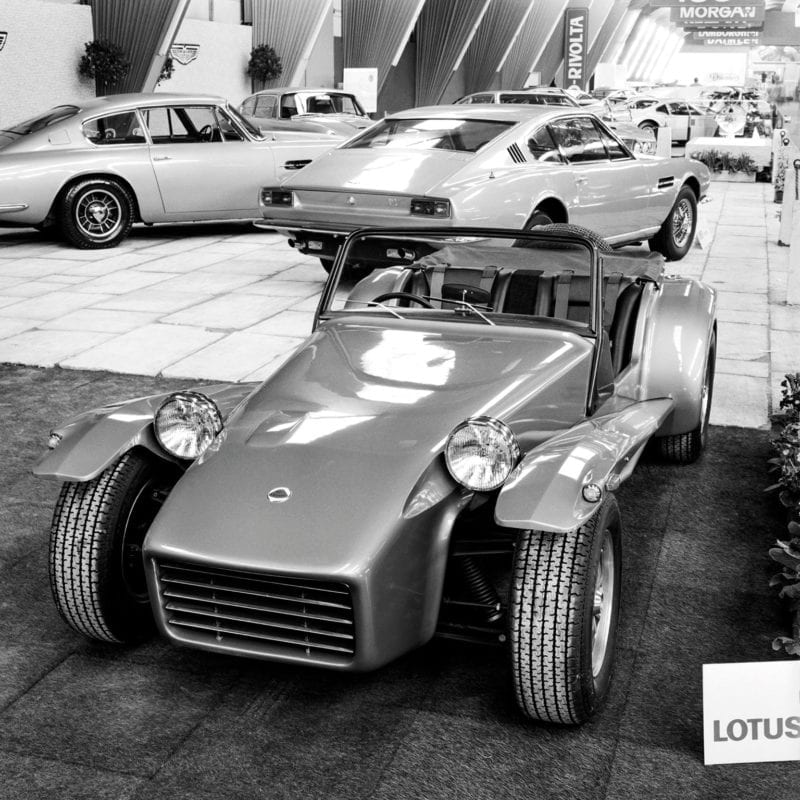
A big contract to produce Lotus 7 chassis got the ball rolling for Arch Motor’s big move to Huntingdon.
But it was under those arches where the firm carried out so much contract engineering, as well as building sidecar outfits, Cyril’s speciality. Arch soon gained a name for quality and drew interest from the wider racing world.
“Chapman was a hard taskmaster, but I enjoyed doing his work because he was so innovative,” Cyril says. “There were times when I had to pull him up short, but I wasn’t afraid to. He wanted me more than I wanted him.” He digs out a blueprint with Lotus printed across it. “This is the last thing I did for him – a quick-flow fuel can. He rang saying it was a rush job. He sent a van with the stainless steel and drawings. That was at Christmas time too, but we got it done. Saved his bacon!”
Another contact was Bruce McLaren. “He was a genuine guy, a great driver and clever too. He had the ideas and had Robin Herd to draw them. We got on like a house on fire, and if he had a problem I’d talk to Len about it. We’d sort it out for him.”
Brabham’s Ron Tauranac was another: “Ron was a guy I really got on with, a natural designer.” Many a Brabham/Motor Racing Developments frame of the mid-60s carries the letters AM. Cyril recalls: “The BT21 F3 was the most successful. We built 121 of those.” And much later when Honda proffered their F2 engine for the works Brabhams, “Ron made me testing manager”.
He chuckles at recalling a historic meeting in New Zealand where he enjoyed pointing out to their owners the AM initials on Merlins, Brabhams and Lolas.
“Lola were on the same site as us [in Huntingdon]. We built all the single-seaters – Formula Junior, Formula 3, Super Vee.” Mind you, his memory of Eric Broadley differs from most: “A very easy-going man and we got on well.”
All this history is pouring out of Cyril as he flicks through albums of cars and bikes and it’s hard to try and pin it to a timeline. Now he’s showing me bikes. “Heard of an Egli-Triumph or Egli-Vincent? I built my version of Fritz Egli’s innovative design – over 100 of them. These two are in museums, and we sent another off to New Zealand just before Christmas.”
He’s been doing this since the 1950s but even though someone else now does the physical work and despite his continuing medical challenges, proper retirement isn’t on the agenda.
In 1965 Arch Motor left its arches, and London. “It got so big it needed to expand and I was offered a rent-free factory in Huntingdon on an out-of-town development scheme.” Specialised Mouldings went too, the well-known maker of many a racing car body. “We were hand-in-glove. They bodied the cars we built. It was a really good time; the firm got up to 48 staff and had a huge contract for Lotus 7 frames.”
Chevron was another marque to knock on the door. “I became very good friends with Derek Bennett. He was the whole package. He’d design and build the car, test it himself and modify it, then bring it to us to make. We bounced ideas off each other. Later we made quite a few B8s, then the B16, F3 and Formula Vee cars. We did all the suspension for those. I enjoyed that.”
Less enjoyable was a dispute among the workforce, and in 1968 Cyril baled out. Arch Motor, of course, still continues building Caterham and Ariel chassis and other car components in Huntingdon under Bruce Robinson, son of founder Bob.
“Len started Leda cars in Bournemouth and said he’d love to have me so I moved the family down here. But really I wanted to be on my own so I started CTG. I was inundated with work, from Chevron and Ron Tauranac, and I built my own CTG F2000 cars.”
These raced from 1977-81, winning several races with drivers including Neil Betteridge, who would go on to link up with CTG again.
More photos cascade from folders onto the table. “That’s an F5000 car I built for Tony Lanfranchi, sponsored by the Steering Wheel Club [a nightclub in West Bromwich] – my own chassis design after he crashed the original Lola. Oh, and this is one of three Viking Formula 3 cars I made for a guy in Sweden called Tore Helle. Len designed that. It was unusual because everything was aluminium, even the uprights. Worked very well until you hit something.” Which was what happened at Monaco in 1976 when having won one heat Conny Ljungfeldt was running second in the final and an upright broke. Still, he collected the Swedish championship in his Viking that year, but the Rotel sponsorship had evaporated.
“Helle went bust owing me money so I took the damaged F3 car and a Novamotor engine. I built Toleman’s first F3 car out of it. They called it a Technic, which Rad Dougall drove at Monaco.” (In ’77 – it didn’t qualify.) More pictures, of a mid-engined Mini with Porsche power, spaceframe by Len and Cyril, also created for Helle.
There are plenty of images of Cyril in bike racing leathers. He raced in TTs for 15 years, including the troubled Norton-Cosworth, a project he subsequently bought over. There’s a further bike diversion as Cyril finds photos of MVs. “I imported those – sold 23 of them. I was chairman of the MV Club. Look at this weird bicycle – I made that, too.” As a cycle enthusiast, I know it’s a copy of a Dursley-Pedersen with a bizarre triangulated frame. He just knocked that up for fun, like the spaceframe Escort he can barely recall.
A picture of Graham McRae’s F5000 GM1, another Terry design, throws up more tales. “That was such a cheat! McRae was fanatical about lightness – the bolts had to be titanium, no overlaps in the monocoque, all butt-welded. And the roll hoop should have been 3mm thick but he had it made in 20 gauge, which weighs nothing. For the testing we puddle-welded round a hole and smoothed it so it measured 3mm thick! When you see him racing he has the rear wing up like a barn door. He could get away with that because it was so light.” New Zealander McRae and his ‘creatively engineered’ car were highly successful in F5000 in 1972 and ’73.
Now we have Formula 1 photos on the table. “My crème de la crème. I built two cars for Emerson Fittipaldi. Here’s the letter from Jo Ramirez.” Sure enough, the team manager’s letter orders two monocoques, the first at £2000, “the second considerably under…”
They only had six weeks for this, the FD04, and there was a catch – it had to appear a purely Brazilian project for the Copersucar sponsor. “So it was all hush-hush. Here’s the car at the airport ready to be flown to Brazil for the presentation as if it was built there.”
In 1976 Emerson qualified the FD04 fifth at Interlagos, though it didn’t shine thereafter. But Cyril is proud to add that on a recent documentary the Brazilian champion was interviewed in front of the FD04 he keeps at his home. And then he remembers walking through the Monaco paddock and being hailed by Fittipaldi: “Cyril, we have a problem!” He sorted their complex welding difficulty, and Emerson asked what he owed. “I said I didn’t want money, get me two pit passes. He took his own off and grabbed one from a team member. So we watched the race from the Rascasse braking area and bits of rubber kept landing in my chicken.”
Graham Hill was another customer, though Cyril promised not to say what work he had done for him, and is sticking to that even now. “He was a lovely man, a real character. He invited me to the launch of the last Embassy car [Embassy GH2] saying, ‘I’m trying to give something back to the sport.’”
Someone who didn’t think that way was BRM’s Louis Stanley, living high on the hog in his suite at the Dorchester while his once-strong team scrabbled for funds. When he landed sponsorship from Rotary Watches for 1977, he got on to Len Terry about designing a new car. “Len asks who’s going to build it, and Stanley says, ‘We will,’” recalls Cyril. “Well, I ended up doing it. It was shown to the press at the Dorchester, and I remember pushing it down Park Lane between all the buses.
“I went to see him – he was known for his trick of keeping a light shining in your eyes – and asked, ‘What about this new engine you’ve promised Rotary?’ He said, ‘We don’t need one. My engine is much better than a DFV.’ I tried to talk about the money. He said he had £75,000 but it turned out that he owed £30,000 of it to the Dorchester.” In fact the sponsorship was much more than £75,000, but Big Lou had a habit of economy with the truth.
The reasonably conventional 207 ran with BRM’s delicate V12, “and a rod went through the block while Teddy Pilette was driving. Stanley told me, ‘Don’t worry, we have plenty of engines.’ Next time out, there was a patch on the block… Nice engine, though.” Still, it only qualified for a grand prix once, in Brazil driven by Larry Perkins, then overheated on lap one. A second car raced in the 1978 Aurora F1 series with Pilette at the wheel, a fourth its best finish.
The last throw of the BRM dice was the almost mythical 230, a ground-effect design by Terry, monocoque built at Cyril’s Ferndown, Dorset workplace and assembled at Bourne. It had a single shakedown run at Donington.
“Stanley didn’t want anything to do with it,” says Cyril, “because Derek Bettridge paid for it, for his son Neil to race in the ’79 Aurora series. But Stanley wouldn’t release his engines, so Derek sued him and put him out of business.”
There was indeed a tangled ownership dispute, which ended with John Jordan buying Stanley-BRM, and later passing the 230 on to hillclimber David Hepworth who built it into the GH1 single-seater Can-Am car. Danny Sullivan tried it in 1980 but crashed. Restored, it appeared at the 2017 Goodwood Festival.
CTG finished in the 1990s when Cyril began to have medical problems, but he kept a workshop going. And the tales keep coming too – parties on Ted Toleman’s yacht at Monaco with James Hunt and Barry Sheen, the Dr Who car he built for the TV series, meeting the famous Wood brothers Indy pit crew when the restored Lotus 38 ran at Goodwood, Len sorting a problem for Chapman on the Lotus 91 for a paltry £250, getting Broadley to sort Jim Crawford’s set up at Indy.
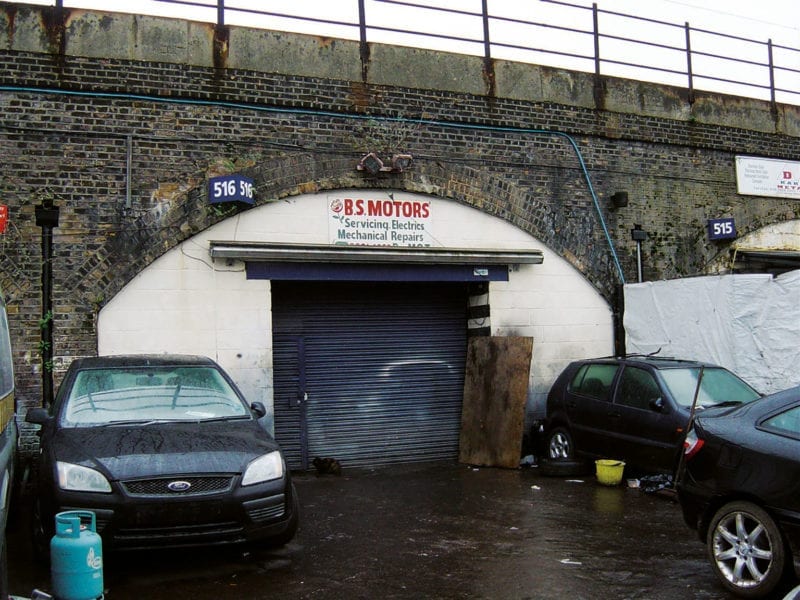
Arch Motor was founded beneath a railway bridge in London… Wonder where they got the name?
In between, Cyril took up trialling with a Cannon, and went on racing bikes into the historic racing era, always with more projects in his active mind. For someone with little formal education, he made quite a mark in our world.
“I’ve been fortunate to earn a living doing what I wanted to do,” Cyril grins. “And I loved everything I did.” That’s not a bad thing to be able to say.